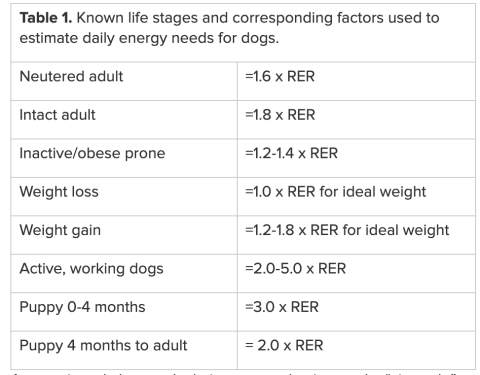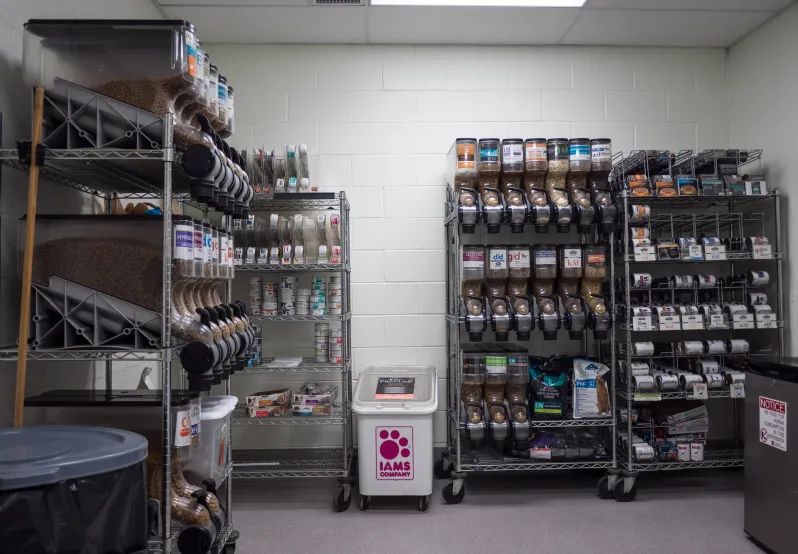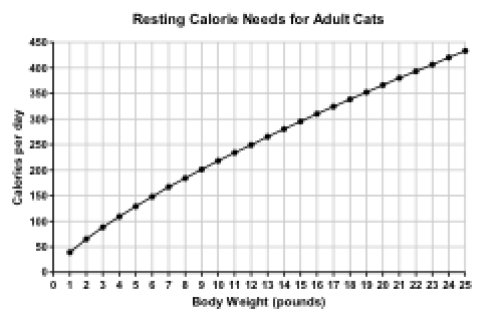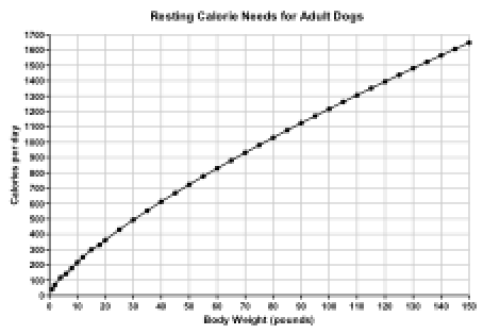- Services
- Companion Animal Nutrition Support Service
Companion Animal Nutrition Support Service
Welcome to the Ohio State University College of Veterinary Medicine’s pet diet information center. This resource was created to help you choose a food that is a good fit for your pet. The first step is considering your pet; is it a cat or dog, how old is it, how active is it, what is its body condition? With this information in hand, our diet search database has a wide range of foods, from generally available commercial foods to foods created to meet owner desires for “holistic”, “organic”, or diets that contain (or exclude) specific ingredients. Some therapeutic foods (to be used under veterinary supervision to manage certain health conditions and diseases) also are listed. This database is not meant to be comprehensive, but to provide examples of some of the many diets available, and to permit comparison among them.
In this section
Owner Information
Like all animals, the nutritional needs of dogs and cats vary at different stages of life. Nutrient needs are high early because of the rapid growth that occurs during the first few months of life, whereas senior pets typically have a slower metabolism and are less active. They may need less energy, but often not other nutrient, intake. More detailed information is available for both dog and cat life stage needs.
Generally speaking, “puppies” and “kittens” are less than 1 year old. Defining the age ranges for adult and elderly pets is more difficult, due to variation by species, and breed (in dogs). For cats, the Feline Advisory Bureau in the United Kingdom classifies cats as “mature or middle aged” at 7-10, “senior” from 11-14, and "geriatric” at 15+ years of age. For dogs, elderly generally means the last 25% of the lifespan.
The following are body and muscle condition scoring charts for both dogs and cats:
Canine Body Condition Score Chart (pdf)
Canine Muscle Condition Score Chart (pdf)
Choosing an appropriate, satisfactory, economical diet for your pet may feel daunting, with so many choices and so many different opinions on pet foods. By appropriate we mean one matched to your pet’s species, lifestage, and activity. Satisfactory means a diet that is:
1) Complete – contains all required nutrients.
2) Balanced –all nutrients are present in the proper proportions.
3) Palatable – will be eaten in sufficient amounts to keep the pet in moderate body condition.
4) Digestible – can be absorbed into the pet’s body for use.
5) Safe – is free of deficiencies, excesses, toxins, etc.
And economical means that the food is available at a price per Calorie that fits your budget.
There are three broad classifications of foods available for pets:
- Conventional Commercial diets are most commonly fed. Common commercial foods are made with chicken, beef, lamb, or fish products and by products, grains such as corn, wheat, rice, barley and/or oats, and added vitamins and minerals to ensure that the final diet is satisfactory. These foods may be formulated for specific life stages such as puppy/kitten, adult, or for “all life stages”.
- Veterinary therapeutic diets are used to manage a variety of health related issues and diseases in cats and dogs. They are available through veterinarians and made to be fed under their supervision because of one or more variations in nutrient content from typical balanced diets.
- Home-prepared diets – owners occasionally prefer to prepare food for their pets themselves. Nutrition consultations are available to discuss this option for individual pets. Guidance for these individuals is also available from other websites to ensure the ongoing health of their pet.
The WSAVA Global Nutrition Guidelines can assist you through the process of choosing a satisfactory diet by showing you how you can compare foods to decide which is best for you and your pet.
If you would like to further discuss whether a home-made diet is best for your pet, you may schedule a nutrition consultation with us.
We will review your pet's medical and diet history, evaluate his or her current diet, discuss appropriate feeding strategies for your pet, answer your nutrition questions and provide written recommendations to you and your veterinarian for commercial diets, treats and supplements (if applicable) to meet your pet's individual nutritional needs.
Balance It provides more information about home-made diets.
We will review your pet's medical and diet history, evaluate his or her current diet, discuss appropriate feeding strategies for your pet, answer your nutrition questions and provide written recommendations to you and your veterinarian for commercial diets, treats and supplements (if applicable) to meet your pet's individual nutritional needs.
Examples of services provided include:
- Optimized commercial diet selection
- Customized home-cooked diet formulations
- Nutritional plans for pets with medical conditions such as gastrointestinal disease, heart disease, kidney disease, cancer or multi-systemic illnesses
- Assistance with feeding tubes
- To schedule a nutrition consult, please review the below information:
- Please fill out the diet history form using the attached body condition, muscle condition, and fecal score charts, and send to OSUVET.nutrition@osu.edu. If you have questions about how your pet scores, please consult with your veterinarian.
- Please have any/all veterinarian(s) send the last years’ worth of medical records, doctor’s notes, and lab work results to OSUVET.nutrition@osu.edu. A minimum database of a CBC, chemistry, and urinalysis is required within 6 months of the consult. If these tests are out of date or have not been performed, they will need to be performed and sent to our office at least 1 week before the consultation.
To schedule an appointment, please email osuvet.nutrition@osu.edu
Basic Calorie Calculator for Dogs and Cats
Pets’ energy (Calorie) needs to maintain a healthy weight for their life stage depends upon several factors. First, the energy to perform essential body functions like digestion, respiration, heart functions, brain functions, etc. (Resting Energy Requirements or RER), which can be calculated by multiplying the animal’s body weight in kilograms raised to the ¾ power by 70, for example, a 10kg (22lb) adult neutered dog of healthy weight needs RER = 70(10kg)3/4 ≈ 400 Calories/day. One also can use the charts below to estimate resting calorie needs.

The RER is then multiplied by factors to estimate the pet’s total daily energy needs. (See Table 1). Individual pet needs can vary by as much as 50% from calculated values however, so these are only starting points for estimating the amount of food to be provided daily. The amount is then adjusted up or down as needed to maintain a healthy body condition score.
As mentioned, these calculations can only give crude, “zip-code” level estimates of your pet’s Calorie needs (and so how much to feed), which can change with time and circumstances.
For example, some dog breeds also require more or less energy by the inherent nature of their breed. For example, an active Jack Russell Terrier versus a miniature poodle. Although both are about the same size, the highly active nature of the Jack Russell Terrier compared to the slower pace of the miniature poodle can result in very different energy intakes to maintain a healthy body condition.
For the long term, you will adjust the amount you feed your pet to keep it in a healthy, moderate body and muscle condition score according to the Body Condition Scoring Chart and Muscle Condition Scoring Chart in the above section.
Estimating Protein needs
The muscle condition score also helps estimate whether or not the pet is receiving enough protein. In healthy pets, coat and skin quality also can be affected by the amount of protein (and a number of other nutrients) consumed. Animals use protein as a source of the amino acids they cannot make, and of nitrogen for the ones they can make. As long as the diet has the proper balance of available amino acids, whether they come from plant or animal sources does not make any difference to the nutritional health of the pet.
Although energy requirements vary greatly, protein needs are fairly constant, with adult dogs generally needing at least 1 gram per pound, and adult cats at least 2 grams per pound. Younger and geriatric pets may need more; young pets for growth, and old pets because they appear to be less able to utilize dietary protein than are younger animals. Within reason, more protein is not generally dangerous, but may be wasteful.
While pets with a healthy muscle condition score, coat and skin quality are probably getting all the protein (and other nutrients) they need, problems with these body systems can be due to a wide variety of nutritional and non-nutritional problems, which can be diagnosed by a veterinarian.
Categories of Pet Foods
There are many myths/misconceptions surrounding pet foods. The information provided below may help answer some common questions. Please also refer to helpful information from Purina Veterinary diets here.
It bears mentioning that no objective scientific evidence has yet demonstrated that feeding Grain Free, Natural, Holistic, Organic, or Raw diets to otherwise healthy pets, when compared to conventional diets, leads to a better outcome for the pet. And one can easily test this for oneself by trying to guess what a random sample of people feed their pet just by looking at the pet, before asking the owner.
Essentially, holistic means considering the needs of the whole animal, not just certain systems or particular aspects of nutritional needs. However, no definition of the term has been generally accepted by the pet food industry, and there currently are no regulations or legal definitions for labeling a food “holistic”, allowing for misrepresentation of the term and its implications of benefit.
Organic refers to the way ingredients are grown, harvested, and processed. The USDA has yet to define “organic” as it applies to pet foods. In the interim, pet foods meeting the human standard may display the organic seal with the following restrictions:
- “Organic” - If 100% organic
- “Organic” - If at least 95% of the content is organic by weight (excluding salt and water).
- “Made with Organic” - If at least 70% of the content is organic. Can cite up to three specific ingredients or classes of ingredients on the front panel. Cannot use the USDA official organic seal.
- If less than 70% of the content is organic only those organic ingredients may be listed and only on the ingredients panel with no mention of ‘organic’ elsewhere on the product, but cannot display the USDA official organic seal.
Biologically Appropriate Raw Foods / Bones And Raw Foods diets are produced to provide a diet thought to mimic what cats and dogs eat “in the wild”. These diets generally consist of variable combinations of raw meats, grains, vegetables, and bones. Like grain-free diets, there is no scientific evidence that feeding a raw vs. a conventional diet is any more beneficial to an animal’s health. However, there is ample evidence that it is not. Moreover, these diets also have generated controversy due to their increased risk for microbial contamination. Exposure of pets and their owners to dangerous bacteria have the potential to cause serious illness. Careful cleaning of all food handling surfaces must be practiced to prevent microbes from contaminated foods to humans and pets. There is also risk of gastrointestinal problems and/or injury from bones in the diet, and the possibility of an unbalanced raw diet causing nutritional deficiencies and directly resulting in illness. We recommend that these diets be carefully selected and researched before use, and then only by owners comfortable with safe handling procedures for raw foods.
Pet Food Ingredients
Many pet owners are overwhelmed with conflicting information from varying sources regarding the nutritional values in pet foods (protein, carbohydrates, amino acids). The following information defines the differences in value between protein sources meat and meat meal, and fillers such as corn and other grains.
Many pet owners are overwhelmed with conflicting information from varying sources regarding protein sources in pet foods. Many people have been led to believe that whole meat is better than meat meal, just based on the name. This is simply not true. As with all ingredients, the origin determines the quality. Meat meal is just like whole meat in that when it comes from a well-known provider and is of good quality, it can be an excellent source of protein. Meat meal is actually a more concentrated source of protein due to the fact that it does not contain the water content of whole meat, and therefore can be added in greater quantities to dry foods to achieve a higher protein content than whole meat because of the limitations of manufacturing machinery in their ability to include water beyond certain amounts. Depending on personal preference as to the type of diet fed (raw, homemade, canned vs. dry,) meat meal can provide a very economical source of high quality protein. Consulting a veterinarian or veterinary nutritionist is always helpful. In some aspects of pet food, a little research is worth the time to avoid manufacturer marketing and cultural hype.
For definitions of what constitutes meats and meals, please visit the Association of American Food Control Officials (AAFCO).
In recent years corn has been described as a low quality “filler” in pet foods, and implicated as the culprit in pets with food allergies (typically by competitor food companies). In reality, corn provides a nutritious, affordable source of carbohydrate for energy, essential amino and fatty acids for healthy skin, coat and immune system function, and a variety of other nutrients. These nutrients are released during the manufacturing process, and are easily absorbed and utilized when included in complete diets.
With regard to corn as an allergen, few veterinarians or veterinary nutritionists believe that corn is a highly allergic food. They often cite the fact that other common ingredients, like wheat, dairy, soy, and beef, are much more frequently associated with food allergies. Moreover, we must remember that the problem in patients with allergies is with the immune system of the individual rather than with any external substance, which has no effect on those with healthy immune systems. For those pets that are proven to be sensitive to ingredients in foods through feeding elimination trails, the ingredient should obviously be avoided, but otherwise it remains a cost-efficient, quality nutrient source for pet foods.


